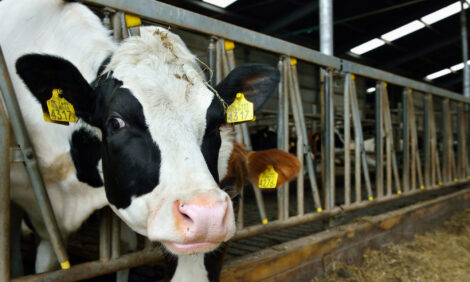



Summer grazing tips for warm and cool season grasses
K-State beef cattle veterinarians recommend summer grazing management techniques to keep pastureland healthy and maximize its usePastures can be thought of in the same light as bank accounts. If an account holder withdraws a lot of money early in the year, then they’re left with nothing to spend on essential things down the line.
Beef producers who manage their pastureland in the same way can face similar repercussions.
Kansas State University veterinarians spoke about summer grazing management techniques that can keep pastures “in the black” on a recent episode of Cattle Chat.
“When we have cool-season grasses right now, they should be doing pretty well in most parts of the country and are very productive. Our warm-season grasses, depending on where you are, maybe haven’t quite come on yet,” K-State veterinarian Brad White said. “We need to think about our plan because both of those types of grasses have what are called dry spells where they’re less productive.”
K-State nutritionist Phillip Lancaster suggests introducing annual warm-season grasses to help balance out a pasture’s nutritional value when cool-season plants start to decline.
“Adding some annual warm-season forages to your grazing land rotation can be very beneficial so that you get something that is peaking in production when cool-season grasses are slowing down because of the heat,” he said.
Lancaster added: “When we get into the July and August timeframe, the cool-season grasses are not able to tolerate the heat, so their productivity slows way down.”
After cattle have grazed down cool-season plants, planting warm-season grasses like sorghum-sudangrass, pearl millet or crabgrass straight into those pastures, or overseeding, serves as a great option for grazing cattle, according to Lancaster.
“Crabgrass is actually a very good (plant) that doesn’t have the potential to introduce some of the animal health problems that sorghum-sudangrass can with nitrate toxicity, but those are still some good options as we’re thinking about planting.”
Rotational grazing tips
For producers who employ a rotational grazing plan, frequently monitoring the growth of the plants within a pasture plays a key part in keeping grass in good condition.
“As you’re rotating to new pastures, paying attention to previously grazed pastures and how they are recovering and regrowing can kind of tell you how fast you need to rotate animals to maintain that plant in kind of a vegetative state,” Lancaster said.
White agreed and added: “In terms of your pasture movement, some of those things need to be sped up or slowed down based on conditions. There’s no static.”
To capture the full benefits of grazing the cool-season plants within a pasture, it’s important they stay immature for as long as possible.
“One of our goals in some of these cool-season forage systems is to try to minimize that plant going into a reproductive stage,” Lancaster said.
White added: “So, keep it from going to seed and getting ‘stemmy.’”


